Peace & Pleasure at the Water’s Edge
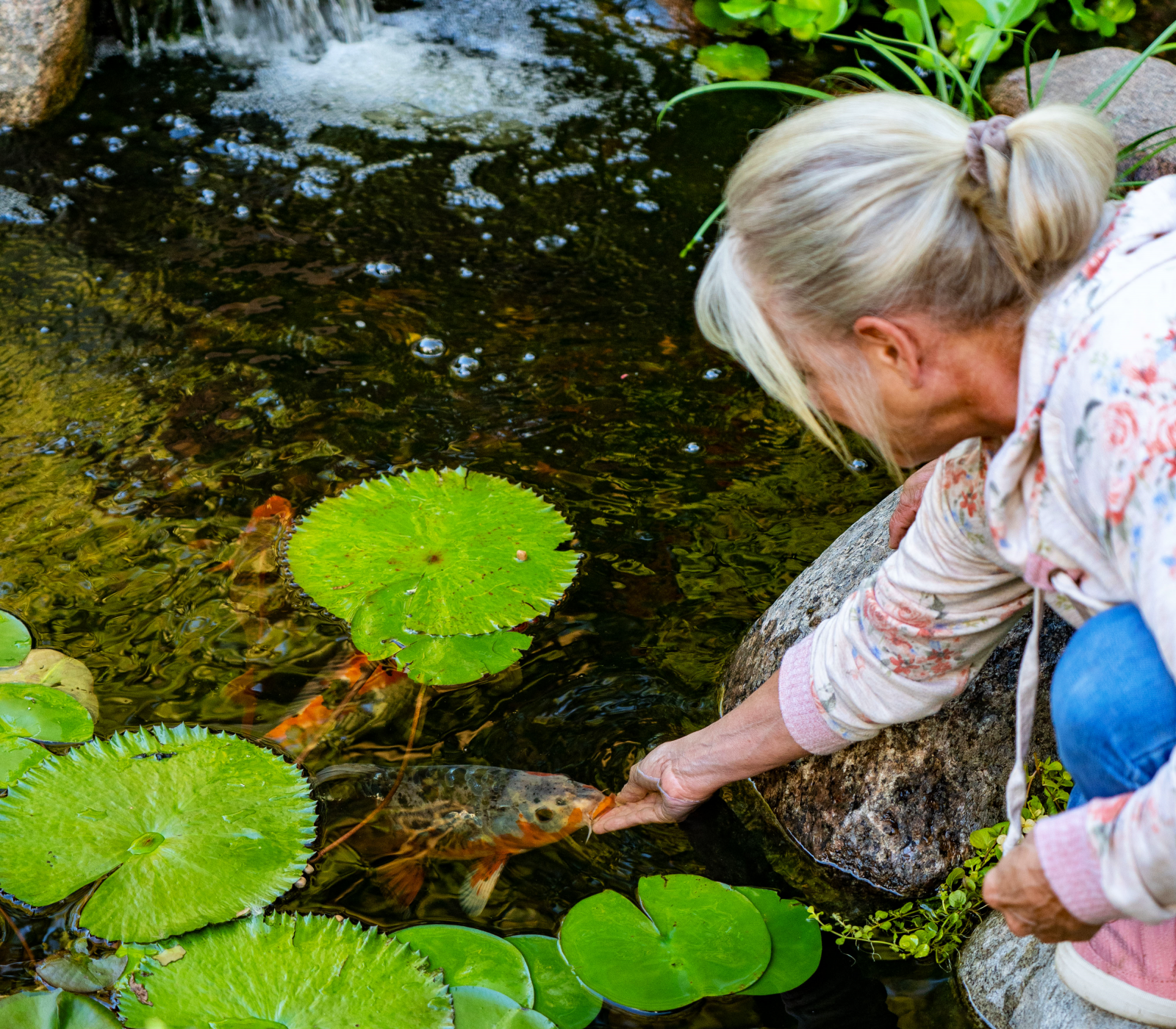
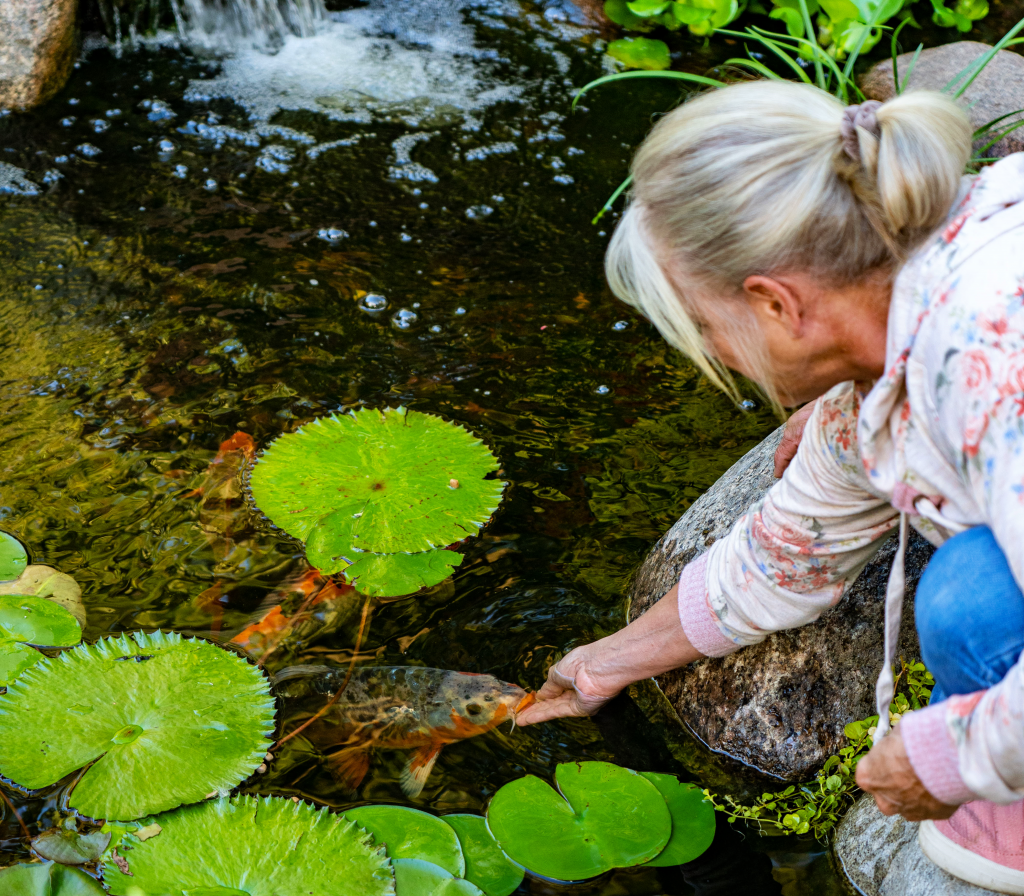
Working for one of the leading pond suppliers and builders in the U.S., Jennifer Zuri has seen countless examples of beautiful, naturalistic watershapes. When it came time to installing a pond for her and her family, even with all her experience, she wasn’t completely prepared for the positive impact it would have on their lives.
By Jennifer Zuri
When we installed our pond, I knew it would have a positive impact; but, even with my long experience in the pond industry, I wasn’t fully prepared for just how much my husband and I would appreciate it.
For more than 21 years I’ve seen first-hand what the presence of a pond can do for someone’s life. As marketing and communications manager for Aquascape, a national pond builder and supplier, I’ve helped tell the stories of people who have experienced the often-profound and surprising benefits of pond ownership.
I’ve heard countless stories of how people facing physical and even psychological challenges have turned to the beautiful waters of their own private oases to improve their situations, and increase the quality of their lives. Examples that come to mind are people who have had cancer or some type of disability, and have drawn strength and inspiration at the water’s edge. Ponds have also become comforting memorials for lost loved ones.
We’ve heard those stories over and over again, of how people can be cleansed by the healing aspect of water. I’m certainly a firm believer, and I’m proud to be part of a company that brings so much peace and pleasure to homeowners across the country and beyond.
BEAUTIFUL ENDEAVORS
I’ve come to regard the most beautiful ponds as works of art. Just as a landscape architect can turn a garden into art, so too people who design and install ponds are working with a natural canvas using the beautiful palette of plants, rocks and water. It’s amazing how beautiful they can be, which is why it’s disappointing whenever I see an unappealing pond built incorrectly. Beauty is in the eye of the beholder, of course, and the true beauty of any pond is the way it makes people feel.
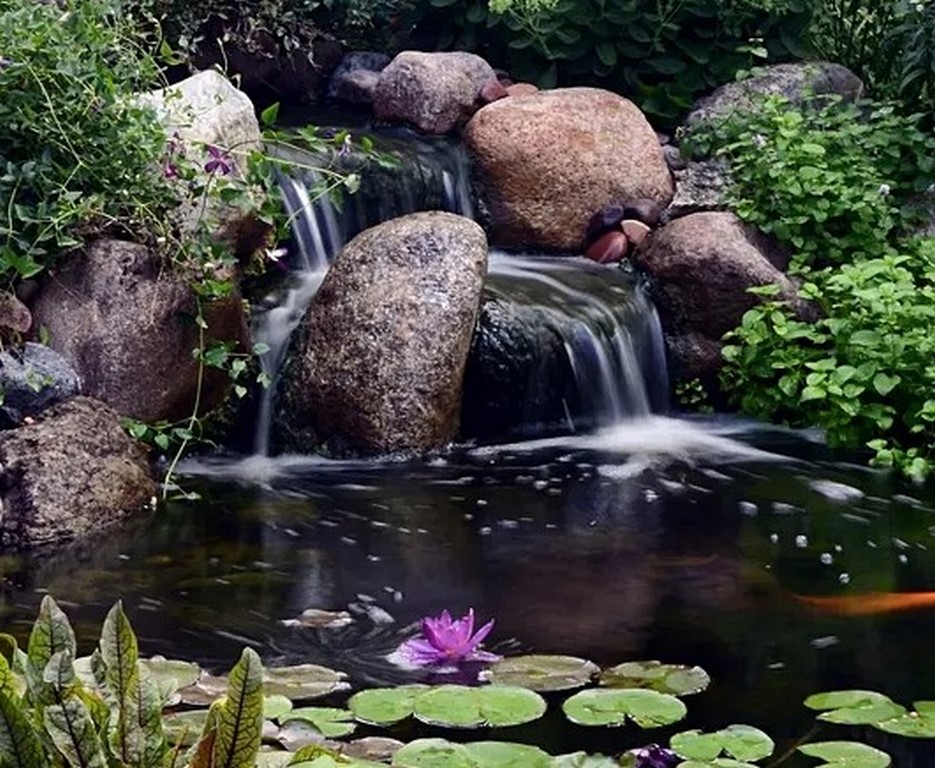
Even though the ponds our company builds are almost always man-made, it is very much the art of harnessing nature. We’re replicating natural systems in a controlled environment and letting those processes do the work of maintaining and beautifying the pond.
When you work with nature, it’s very soothing and gratifying. I’ve always loved taking care of plants and animals, so owning a pond made sense. It’s very much about the joy of nurturing and it draws you outdoors and closer to nature. A pond rewards the efforts made in caring for the water and all the lifeforms in and around it.
When a pond is operating correctly — meaning all the elements are in balance, both mechanical and natural — it becomes surprisingly easy to maintain because nature does most of the work. The simple chores of cleaning unwanted weeds or debris, and caring for the plants around the banks, become labors of love and a source of the joy and pride of ownership. It’s very rewarding.
Naturally, the first thing we experience is visual beauty. Water’s alluring presence is familiar to most people; and, while there have been volumes written about it, the visual impact of water is something that’s felt more than understood in literal terms.
I’m also drawn to the fragrance of a pond. Some people find that surprising, but to me it’s like the ocean or fresh-cut grass. There’s an olfactory facet to the beauty of a pond that’s very appealing, and memorable.
And, of course, there’s the sound of moving water, which is something that many, if not most, pond owners say they appreciate. In fact, in consumer surveys we’ve conducted at Aquascape, people respond that the number-one reason they wanted a water feature was the sound.
I personally love how, even when you’re inside your house, you can still hear the moving water. Sound permeates the entire environment, and the sublime sounds of moving water might be the most soothing in all of nature. That’s why many clients want to make sure the waterfall is near their bedroom, kitchen or living room window, if possible. They want to maximize the psychological benefits of hearing the moving water inside the home. In some situations, the sound is used to mask unwanted traffic noise as well.
There’s also the feel of the water. I love getting in our pond and will find any excuse to take a dip. Our pond wasn’t exactly designed for swimming, but I certainly go in it on a regular basis nonetheless. If we had it to do over, we’d probably make it more deliberately configured for swimming.
MAKING THE LEAP
My husband, Robert, and I had wanted a pond for a long time and, as it is for many people, it was a big decision. We were uncertain whether or not we were going to stay in the home we’re in, so we waited. Eventually, we decided we were going to stay here and so we went forward with the pond. That was about three years ago.
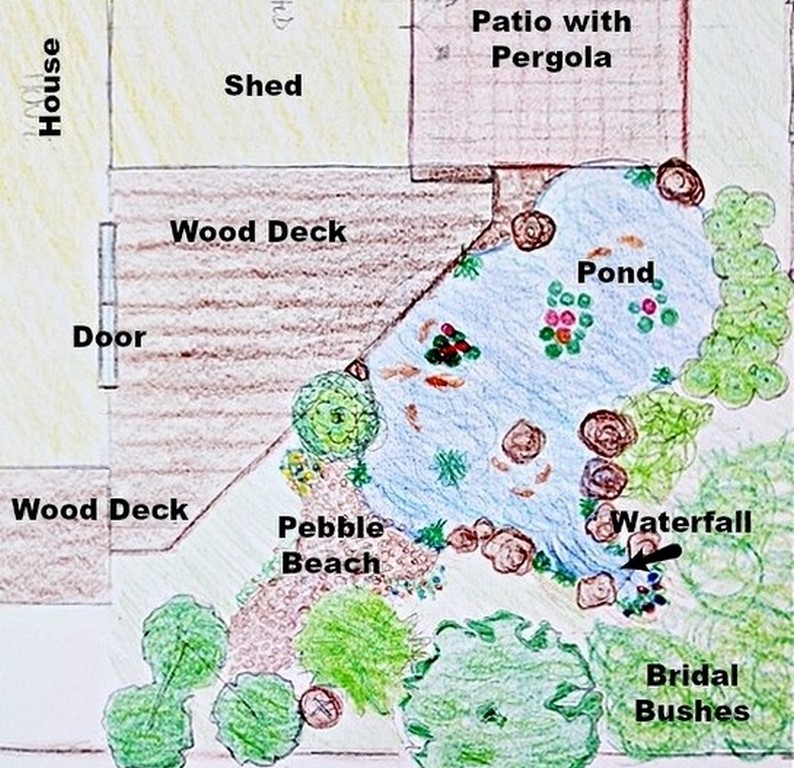
Signature Series 1000 Pond Skimmer
Signature Series 6000 BioFalls® Filter
5 PL 5000 Solids-Handling Pond Pump
3-Watt Spotlights
45 mil EPDM Pond Liner
Geotextile Underlayment
Granite boulders
Pocono River pond gravel
Looking back, I wish we had installed one sooner. Once you’ve had one, and have had the positive experience of owning a pond, you can’t go back. I’d put one in any home regardless of how long we were planning on living there. I can’t imagine not having one anywhere we live.
Our pond is small compared to some. It’s free form at approximately 17-by-11 feet and only two-feet deep; but, it’s scaled perfectly for our backyard. We placed it in an area where we couldn’t grow grass because of shade trees. It had been a forgotten area in the yard, but now we go back there every single day. It’s one of the most used areas on our entire property.
The pond’s edges are comprised of rocks and planting pockets that are diffused into the surrounding landscape. It’s modest in scale, but highly detailed, and we think extremely beautiful. Time and again, I’m amazed by what you can achieve with expertly selected and placed plants, rocks, and water.
It has a pebbly beach, which the grandkids love. It’s only about three-by-four feet, just a couple inches deep and it has a tiny gravity-fed waterfall that was diverted from the larger Biofall ™ waterfall just few feet away. Even though it’s this tiny little space at the water’s edge, the kids think it’s a big adventure. They love looking for frogs and interacting with the water. I’m trying to get them to feed the koi, but they’re still a little intimidated.
It also has an adjacent deck, which I like to use for yoga. It’s a ritual that has become one of my favorite parts of the day. Yoga is all about harmonizing the mind and body, and there’s something about doing so in the presence of water.–With its sights, sounds, and smells, it is deeply invigorating and soothing at the same time.
I started doing yoga to improve my balance, having seen what falls can do to people as they grow older. Because I enjoy the experience of practicing yoga by the pond, it’s easy to stick to it, and therefore reap the benefits of making it a routine. Focusing on breathing is central to both yoga and meditation. When I’m by the pond, I enjoy breathing, going back to the fragrance factor. It’s a place and practice that rewards the time you spend.
In that very real way, the pond has a direct impact on my physical and mental wellbeing.
MAINTAINING THE JOY
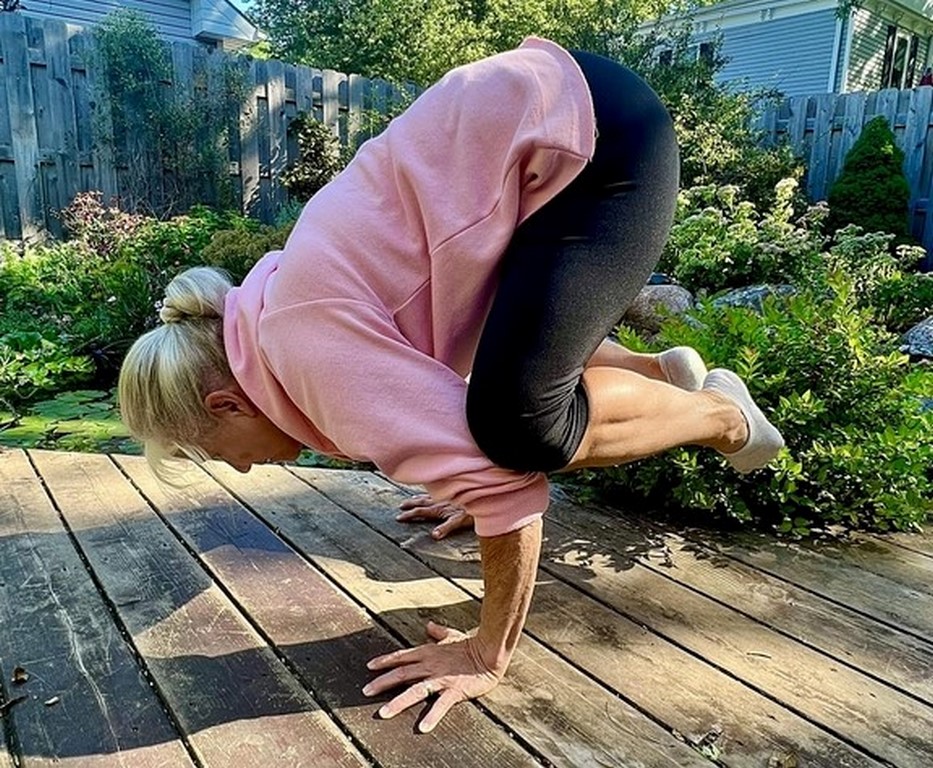
Like many proud pond owners, I love our fish. We have seven koi, relatively small but growing. Although it’s tempting to have more, they’re so pretty and so fun to watch, it’s important not to over populate the water.
Maintaining a pond means first and foremost establishing a balance with the water and all of the biological constituents. When you overload a pond with too many fish, it’s impossible to maintain water quality, and you compromise the health of the fish. For our size pond, seven is a perfect number.
Plants are extremely important, both from an aesthetic and functional standpoint. Water plants absorb (uptake) chemicals and work as a type of natural filtration and water treatment system. As a general rule, we recommend covering about 30% of the pond surface with plants such as water lilies, water lettuce and hyacinth. We also have purple pickerel, dwarf sweetflag, bellflower, yerba mansa, chameleon plant, and frogbit.
When you combine the aquatic plants with the terrestrial landscape, it’s a beautiful, multi-colored and textured scene that’s always changing with the seasons. Tending to the pond and garden areas is a big part of our joy and overall satisfaction.
In a very real way, a pond is like a living organism, with all it’s interactive and dynamic elements. The more you treat it with love and care, the more it will reward you for the time and effort. As time goes on and you become more in tune with the pond and all that it contains, the more you appreciate having it as a constant companion and source of happiness.
Jennifer Zuri is the marketing communications manager for Aquascape, Inc. where she began her career in water features in 2002. She authored Pond Builder’s Guide to Break Even, serves as editor-in-chief for the Aquascape Lifestyles magazine, and has written several water gardening articles for a variety of trade publications. A former president of the International Waterlily and Water Gardening Society (IWGS), Jennifer enjoys choosing waterlilies and aquatic plants for her pond.









